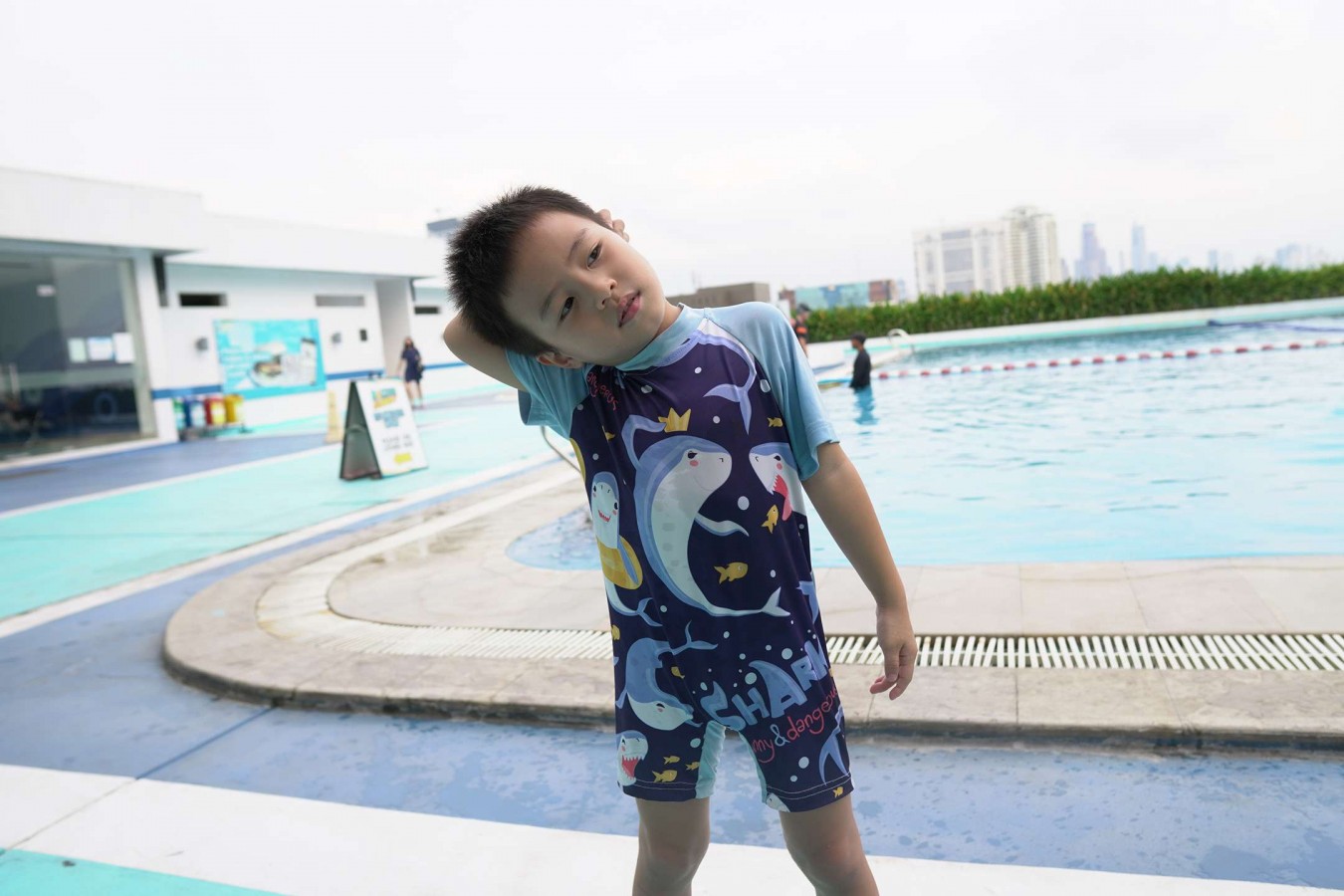A Guide to Effective Dryland Workout Routines for Swimmers

Ready to take your swimming to the next level without even getting in the pool? Sounds a bit strange, right? But it’s totally possible, which we usually call dryland workouts!
Dryland training is one of the secret weapons top swimmers use to become faster, stronger, and more powerful in the water. This guide will walk you through everything you need to know about dryland workouts for swimmers.
So grab your towel, a bottle of water, and let’s get moving!
What is a Dryland Workout for Swimmers?
Let’s start with the basics. A dryland workout is exactly what it sounds like: swimming-related exercises performed on land. While swimming builds technique and endurance in the water, dryland focuses on improving strength, mobility, flexibility, balance, and injury prevention outside of the pool.
Think of it like this: the pool is where you practice your swimming skills, but dryland is where you build the body to swim better, stronger, and faster.
Dryland training includes:
- Strength training (bodyweight or weights)
- Core conditioning workouts
- Mobility and flexibility work
- Plyometrics (explosive jumping exercises)
- Balance and coordination drills
And yes, it's just as important as time spent in the water!
How Dryland Workouts Are Structured
A good dryland routine isn’t just a random bunch of push-ups and squats. It’s structured carefully to support and enhance swimming performance. Here's how most dryland workouts are built:
1. Warm-Up (5–10 minutes)
Just like in the pool, warming up is essential. This might include:
- Arm circles and shoulder rolls
- Leg swings
- Light jogging or jumping jacks
- Dynamic stretches (no static stretching here!)
2. Mobility & Activation (5–10 minutes)
Before jumping into strength exercises, you want to activate key muscles, especially the shoulders, hips, and core. This helps avoid injuries and ensures your muscles are working properly.
3. Main Workout (20–30 minutes)
Here’s where the magic happens. The main workout includes exercises for:
- Upper body (for stronger pulls)
- Lower body (for powerful kicks and starts)
- Core (for stability and body position in the water)
4. Cool Down and Flexibility (5–10 minutes)
End with static stretching and deep breathing. This helps muscles recover and improves flexibility over time.
How Dryland Workouts Improve Swim Pulls and Kicks
Wonder how dryland workouts can improve swim pulls and kicks? Let’s break it down:
A. Stronger Pulls
Pulling through the water requires back, shoulder, arm, and core strength. Dryland exercises like pull-ups, resistance band rows, and push-ups build these exact muscles. When your upper body is stronger, your arm strokes are more powerful, and you glide farther with each pull.
B. More Explosive Kicks
Kicking well means strong hips, glutes, hamstrings, and calves. Dryland leg workouts improve your kick speed, start explosiveness, and even your flip turns. These build the muscle needed to push water more forcefully with your legs.
C. Better Body Control
Swimming is about staying streamlined and in control. That’s where core workouts come in. A strong core helps you maintain a horizontal position, reduce drag, and rotate efficiently during strokes.
Dryland Exercises for Swimmers (with Examples!)
Alright, time to dive into the fun part—the workouts! These dryland exercises are designed to make you faster, stronger, and more controlled in the pool. We’ll group them by focus: core, upper body, lower body, plyometrics, and mobility.
Feel free to mix and match to build your own routine or use them in a weekly rotation.
1. Core Workouts (For Stability & Body Position)
A strong core is the secret to great swimming. It helps you hold proper body alignment in the water, improves streamlining, and lets you transfer power from your arms to your legs smoothly.
-
Plank Hold
A classic! Lie face down and lift yourself onto your elbows and toes, keeping your body in a straight line. Hold for 30 seconds to start.
-
Russian Twists
Sit on the floor, lean back slightly, lift your feet, and twist side to side while holding a light weight or medicine ball.
-
V-Ups
Lie on your back, arms and legs extended. Lift both simultaneously to form a “V” shape, then lower.
-
Dead Bug
Lie on your back, arms and legs up. Extend one leg and the opposite arm slowly while keeping your core engaged.
-
Superman Hold
Lie face down and lift arms, legs, and chest off the floor, holding like Superman flying.
2. Upper Body Workouts (For Pull Strength)
These moves help strengthen the muscles used in your pull phases (arms, shoulders, chest, and back).
-
Push-Ups
Start in a plank position and lower your body until your chest nearly touches the ground.
-
Pull-Ups
Grab a bar with palms facing away, pull yourself up until your chin is over the bar.
-
Dips (on Bench or Chair)
Hands on a bench, feet out in front, lower your body and press back up.
3. Lower Body Workouts (For Powerful Kicks)
Strong legs = strong kicks. These movements focus on developing explosive strength and endurance in your lower body.
-
Bodyweight Squats
Stand with feet shoulder-width apart, squat down and back up while keeping your chest lifted.
-
Jump Squats
Same as a squat, but explode into a jump as you rise.
-
Lunges (Forward & Reverse)
Step forward (or backward), lower your back knee, then return to standing. Alternate legs.
-
Calf Raises
Stand tall and lift your heels off the ground. Hold at the top.
4. Plyometrics & Speed (For Starts & Turns)
These exercises are all about explosive power which is perfect for strong dives, quick turns, and fast finishes.
-
Box Jumps
Jump from the ground onto a sturdy box or platform.
-
Burpees
From standing, drop into a squat, kick legs back into plank, do a push-up, return to squat, and jump up.
-
Jump Lunges
Lunge down and jump to switch legs in mid-air.
5. Mobility & Flexibility (For Injury Prevention & Long-Term Performance)
Last, remember to never skip this part. Staying mobile and flexible keeps your strokes smooth, prevents injuries, and allows for full range of motion.
-
Shoulder Circles & Band Pulls
Rotate shoulders or pull resistance bands apart.
-
Cat-Cow Stretch
On hands and knees, alternate between arching your back (cat) and dropping your belly (cow).
-
Child’s Pose
Sit back on your heels, reach arms forward and rest forehead on the ground.
-
Hamstring Stretch
Sit with one leg extended and reach for your toes.
Have You Done Your Dryland Workout?
You don’t need a gym full of equipment to get stronger and faster in the pool. With consistency, even 30–45 minutes of these dryland workouts 2–3 times a week can make a huge difference in your swim performance.
But if you're truly looking to help your child reach their full swimming potential, it all starts with the right guidance and environment. At Rockstar Academy, we offer one of the best Swimming Programs backed by a world-class curriculum in Sports & Performing Arts.
As a parent, enrolling your child here means giving them the opportunity to not only train hard but also compete in the RockOlympics—an exciting event that helps students discover their talents and grow in confidence.
What’s more, Rockstar Academy also offers Private Instructions for students who need that extra boost. These one-on-one sessions are designed to be completely personalized, focusing on your child's unique needs and goals.
Students will benefit from intensive training, real-time feedback, detailed progress reports, videos from training sessions, and even weekly exercises to continue their improvement at home.
And the best part? We offer a free trial class, so your child can experience the Rockstar difference firsthand! So why wait? Dive into greatness with Rockstar Academy today!
FAQ
How often should swimmers do dryland training?
Most competitive swimmers do dryland 3–6 times per week, depending on age, training phase, and intensity. For beginners, 2–3 sessions a week is a great start.
Do I need equipment for dryland workouts?
Not necessarily! Many effective exercises use just your bodyweight. But resistance bands, light dumbbells, and a yoga mat can help level up your routine.
Can dryland workouts replace swim practice?
Nope! Dryland enhances swimming—it doesn’t replace it. Think of dryland as the support crew that helps your swimming engine run faster and longer.
Are dryland workouts safe for kids and teens?
Absolutely! With proper supervision and age-appropriate exercises (mostly bodyweight and light resistance), dryland is safe and super beneficial for young swimmers.



